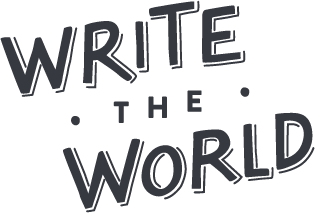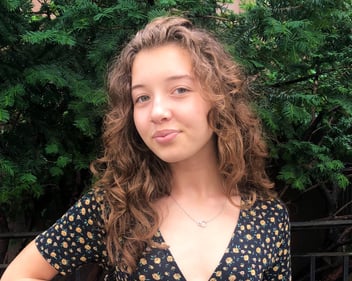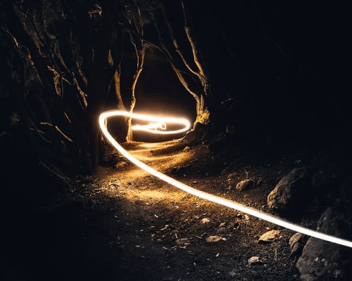Our friends at Facing History and Ourselves recently partnered with award winning author Sonia Nazario to bring her powerful book, Enrique’s Journey, into classrooms. The book tells the story of a Honduran boy who overcame unthinkable obstacles to emigrate from Honduras to reunite with his mother in the United States. Today, Sonia, who retraced every step of Enrique’s journey to tell this story, shares more on what this experience changed about her as a writer and as a person. Sonia also gives invaluable advice to young writers who are looking to make tangible change through activism and the written word.
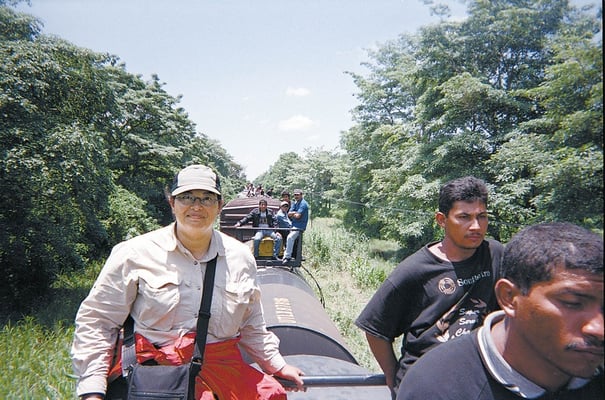
photo courtesy of Don Bartletti, Los Angeles Times
A lot has changed since you wrote and published Enrique’s Journey, especially in light of our current social and political climate around immigration. How has this impacted your perspective on Enrique’s Journey?
When I began to report [on Enrique’s Journey] in the late 1990s, around 2000, what we were seeing was the height of immigration into the United States. From 1990 to 2010, we had 27 million people come here legally, which was the greatest number in our history. All of those migrants were not necessarily going to just 6 states, which they had gone to traditionally—California, New York, Texas—they were going everywhere in the United States, following the jobs. And that was what would bring this kind of cultural backlash; many of these communities who hadn’t seen migrants for 100 years.
But what really kicked me into high gear was in 2014 we saw a surge of children coming to the United States alone who were just like Enrique. The number of children coming was several times higher than the historic norm. And I didn’t see anyone really explaining why this was happening. So I wanted to show people what is really pushing people out of three particular countries in Central America that had become extraordinarily violent—among the top five most violent countries in the world.
Extreme violence in Honduras, for example [ensued] as the traffickers moved drugs through the country and tried to control the turf to move the drugs north. So when I went back to [Enrique’s] neighborhood in 2014 I was trying to show what the effects of this were. Increasingly, the growth of very violent gangs, as the US deported gang members from here back to Central America.
The shift that happened was that now people were fleeing these places, children were fleeing these places because they feared for their lives, if they hadn’t joined the gang or agreed to what the narcos wanted. There had been this real shift in why people were coming. And I felt that more and more the US should step up to protect these refugees—that’s what these kids are now. So we’re now seeing more Enrique’s than at any other time in our history.
In what ways has this work and writing this piece changed you as a writer, and as a person?
I started at the Wall Street Journal, then I went to the LA Times, now I’m a contributing opinion writer for the New York Times. I was never really taught to be a storyteller, to embrace the best elements of writing books, where you have a story with a beginning and a middle and an end, and that has cliffhangers at the end of each chapter, and where you have compelling characters, and you see the growth of those characters and the change of those characters over time.
So I think for the first time, while I had certainly done this in other stories to some degree, I think I employed them to a much greater degree in Enrique’s Journey. And I wish they would teach writers in journalism to tell stories using these elements that every book writer uses at the beginning of their career, not 20 years into their career like me.
To report Enrique’s Journey, I spent three months riding off and on, on top of freight trains through all of Mexico. I did the journey exactly as this boy had a few weeks before I met Enrique. He had made it all the way to northern Mexico on his eighth attempt to reach his mother in the United States. And so I spent two weeks with him in northern Mexico. I hung out with him in the morning, afternoon, and night, sleeping out on the muddy banks of the Rio Grande. And I tried to watch his misery play out so as a writer I could tell my readers what he’s going through and show them.
So I think, the journey made me incredibly grateful for what I have. I think before making this journey and reporting this, I took for granted what I had. Because of the privilege of being raised in the United States where you have certain economic, and other, opportunities. And I think now I just wake up with a very different perspective. I saw people who were willing to risk their very lives to get what I took for granted every day.
I [also] moved from being an educator to really being an advocate and being an activist and fighting for these people who I think are being treated quite badly right now.
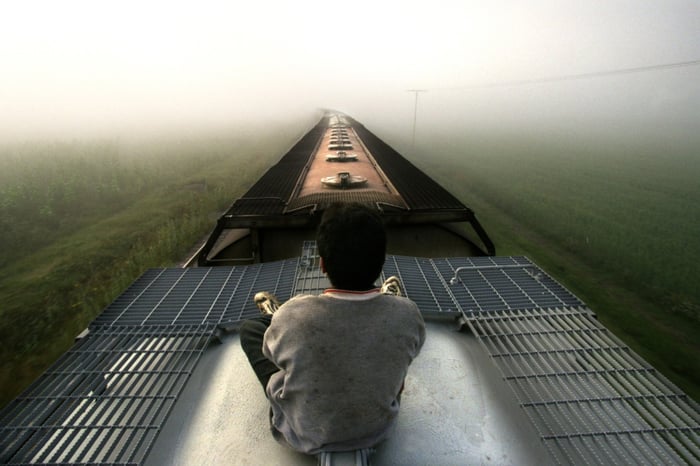
Many of our young writers are also interested in activism and social change through writing. What advice do you have for them as they start this work?
It’s important to understand what you care to write about. For me, it was broadly social justice issues and social issues. I decided to become a writer/journalist when I was fourteen years old. My mother took our family back to live in Argentina where both of my parents were from. And it was the beginning of the so-called Dirty War in Argentina; the military was just about to take power. And over the coming few years, they would murder 30,000 people. There were a couple of journalists who were murdered down the street from where I live, and I asked my mother why, and she said well, those journalists, they were trying to tell the truth about what’s going on here. I saw that journalists could hold people in power accountable and could try to get out the real story as opposed to the story that the military was trying to manufacture about what was going on.
I think it’s important as you start out, to focus. the most important lesson my first editor told me was, “Show, don’t tell.” And I do that through immersion journalism reporting; it’s the same thing as what anthropologists do. So, instead of sitting in my office in Los Angeles interviewing a boy who had just made the journey, I went on this journey.
I [also] think it’s important to build a case in your stories with strong evidence. I go out there and I do lots of reporting, lots more than most other journalists that I see. I view it as having a lot of really strong bricks, hundreds of them, so I can build a strong house once I sit down to write.
And I think finally what’s important to think about now, is proposing solutions when you write, not just laying out the problem in all its gory detail. I think too often now writers throw it in readers’ laps and say, “OK here’s the problem, you figure it out.” And they don’t like that! They want you to put in as much effort into telling them what works. If this isn’t working, what will work? Guide me and direct me in what I should do about this issue.
You started to touch on this, but is there anything else that you wanted to mention about your writing process? In terms of how you find a story, all the way through to publication?
When I report, I put the five senses on the top of my notebook: what does it look like, what does it smell like. I’m trying to think almost as if it’s a movie as I’m reporting a story. And I’m focused on the emotion. But for me, the emotional charge is the most important part of the story. When my housecleaner told me she hadn’t seen her children in 12 years, my hair went up on my forearm. And that’s my sign that I’ve got a good one on the line. That’s a story that moves me, and if it moves me, it might move you. So that’s my goal. To move you, to read to the end, and then do something about this issue.
Along the way, are there any teachers, or authors, mentors, friends, who have influenced you or inspired you to do this work?
So I would have to give a lot of credit to my mother. She would sit at the kitchen table every morning and religiously read the newspaper—she would point to a story and say, “That’s so screwed up!” My mother was born in Poland, Jewish, and fled with her family before WWII to Argentina. So she had kind of an Argentine-Polish accent. She would get pissed off about things that she saw that she thought were unjust. And I think that’s where I get that from, that sense of “that’s not right, why is it that way, and how can we change that?”
I didn’t read a lot of books when I was young, I’m catching up for lost time now, but obviously there are many authors that I’ve read—Gabriel Garcia Marquez, others who I deeply admire. And I try to, when I read books, I try to read them first just to read them, and then I read them to deconstruct how they are written.
But I think for me [many of my influences] were my editors in newsrooms. I made an art of finding the best editor in the room and asking to work for that person, or finding a way to work for that person. My last editor at the Los Angeles Times, Rick Meyer, was just a master at storytelling and making me better, and pushing me to be better. I think that’s really important to find people who can teach you, who can push you to be better, and always working to be better at the craft.
What have been some of the most challenging parts about doing this work? And what have been the most invigorating?
There are a lot of challenging elements. I throw myself into dangerous situations. I ride on top of freight trains. I hung out in some of the most dangerous neighborhoods in the world in Honduras. So those things produced a lot of personal trauma. I think writers who do this work have to figure out how to take care of themselves so they can keep doing this work.
I think even harder is the ethical dilemmas that I faced. Often, under the ethics of journalism, you’re not supposed to help people that you’re writing about. You’re not supposed to pay them money. You’re supposed to write about reality, not change that reality and present an altered reality to your readers. So for me, you know, the line is, is someone in imminent danger? And if they are, then I help them. But I can’t use what happened after that because I’ve changed the story. So it’s trying to minimize harm while still getting close enough.
What I find most invigorating, is that with Enrique’s Journey there have been so many ways in which students especially have responded. They have gone to Central America after reading my book and built water systems, and homes for single moms, and schools. I’ve had a dozen kids come to my talks, students at colleges and hear the need for lawyers for these children and they decide in that moment, I’m going to become a lawyer and do this! And they come back to my talk five years later and say, I decided to become a lawyer when you said that and I went to law school and now I’m representing these children that you told me about.
Are there any projects you want to share or anything coming up that we should look out for?
I’m on three non-profit boards, I do a lot of speaking about Enrique’s Journey around the country and around the world, I am a contributing opinion writer for the New York Times, so I’m still writing about these issues right now. Then there’s this book that keeps getting kind of put on the back shelf because of these other pressing things. But I’m finally making some headway on it. And It’s looking at several big social issues in the United States through women who are taking on individual issues and providing solutions.
I think, more and more, that is the role of reporters and writers—trying to take these very complex, polarizing issues, and boil them down through narrative and tell us, what is important here. Why is our K-12 educational system not working as it should? And what are the best solutions for that? And a lot of this is very difficult and controversial, but I think that’s what our role should be now.
